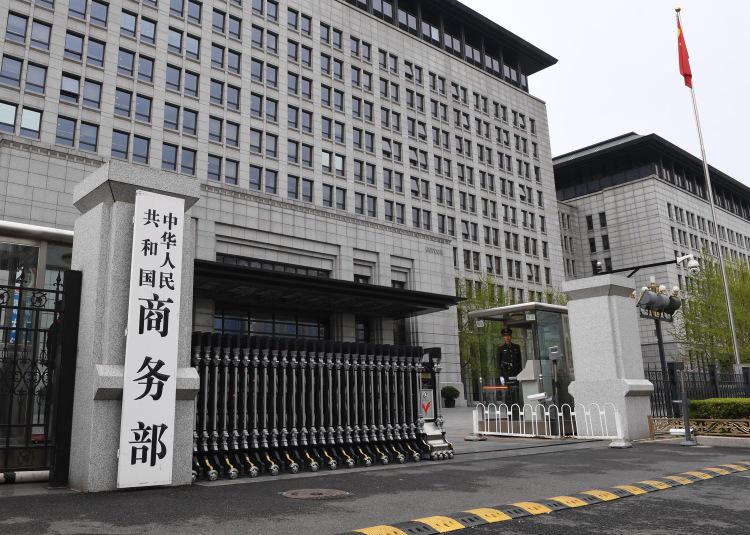By Daryl Guppy
Australian Trade Minister Don Farrell returned from China on May 13 with a commitment to hold further talks with China about ways to improve the mechanics of the trading relationship. Trade Minister Farrell was careful to playdown the often media hyped expectations of what the visit could achieve. The circumstances leading up to the trade difficulties developed slowly over time and it is unrealistic to expect that they could be undone with the snap of one's fingers.
Policy making and implementation does not occur at this speed, and it is a mistake to think that policy announcements are made at whim.
Although the trade dispute is often described in blanket terms as trade bans by the Australian media, this claim is inaccurate. The areas of concern fall into three main categories, each of which requires a different approach to policy resolution. To simplify these as trade bans is unhelpful because it fails to acknowledge the complexity of the issues.
Trade Minister Farrell said the meeting gave the ministers "opportunity to take stock of our economic and trade relationship including progress we have made to resolving the remaining impediments to trade and to agree to consider the next steps."
Echoing these sentiments, Chinese Minister of Commerce Wang Wentao said "Looking into the future, to maintain a good bilateral economic and trade relationship needs our joint efforts."
The first category of trade friction is the imposition of tariffs. Most notably China applied tariffs to Australian wine, barley and cotton. There are two things to note about tariffs. First, and perhaps most important, is that tariffs are applied in accordance with the World Trade Organization (WTO) rules and requirements.
Normally this type of WTO dispute can be resolved relatively quickly but in this case resolution has been delayed because of the three years blocking by the United States of the appointment of appellate judges. As a result, the tariffs issues have been subject to an alternative dispute settlement process which has taken time to set up.
A preferred outcome is to resolve these matters through face-to-face discussion, and Trade Minister Farrell's visit has laid the groundwork for this process.
Second, it should be noted that Australia, using the same WTO rules, has imposed tariffs and duties on a range of products from China. The tariffs of 57 percent on steel from China is a prime example.

The entrance to the Chinese Ministry of Commerce (MOC) in Beijing, capital of China. [Photo/Xinhua]
Certainly, the timing of tariff restrictions may contain a political element but the application of tariffs is consistent with WTO rules.
The second category of trade friction is the imposition of company specific bans, particularly in relation to meat. At the core of these bans is the refusal of the individual companies to comply with the relevant customs regulations. Boxes of Australian frozen meat had frequently been incorrectly labelled. Product substitution is a serious problem for China, so this type of misinformation is of particular concern. Despite multiple warnings, the companies persisted with incorrect labelling and so they were banned from exporting to China.
The Australian media hyped the reporting of these individual bans to give the incorrect impression they were industry wide bans.
Falsification of product standards is a significant concern for the reputation of Australian exporters. Some Australian coal exports had their quality - and hence their price -upgraded by using false quality reports. When coal was sample tested on arrival in China, the quality did not match the claimed standard. It is little wonder the coal shipments from other sources were given priority for purchase.
Gold purchased by the Shanghai Futures Exchange from the Perth Mint was not of the correct standard of purity.
Routine inspection of some organic cargoes detected higher than permitted pest infestation. Bans were imposed until the exporters could show an improvement in pest treatment practices. When claiming these requirements were unfair, Australia chose to ignore its own strict bio-security controls that saw a ninety year fight to stop the import of apples from New Zealand. Australia is also now demanding extra precautions be taken by car importers to ensure there is no bio-security threat.
The third category of trade friction was a small number of informal bans on items like crayfish. In many ways these are similar to the informal ban imposed on Huawei that destroyed its mobile phone business in Australia. They are similar to the current ban by Australia on importing electric vehicles from China.
Although the Australian media prefer to lump all of these trade issues together in a single misleading claim of China-imposed trade bans, the reality is more complex as trade has become more difficult due to a range of issues.
Trade Minister Farrell recognized this complexity and welcomed the focus on working together to resolve these trade issues as quickly as possible. Trade Minister Farrell invited Minister Wang to visit Adelaide, and stay at the Farrell family's winery in the Clare Valley. The high degree of complementarity between the two economies is a favorable force towards resolving these temporary problems.
Daryl Guppy is an international financial technical analysis expert. He has provided weekly Shanghai Index analysis for mainland Chinese media for more than a decade. Guppy appears regularly on CNBC Asia and is known as "The Chart Man." He is a former national board member of the Australia China Business Council.

 中文
中文



